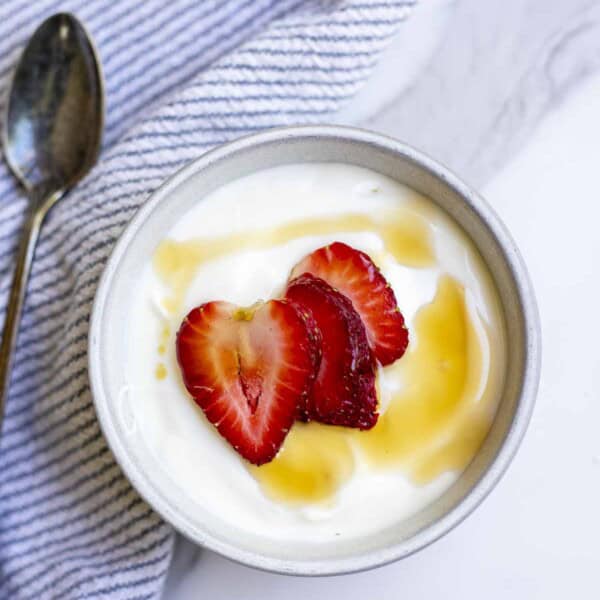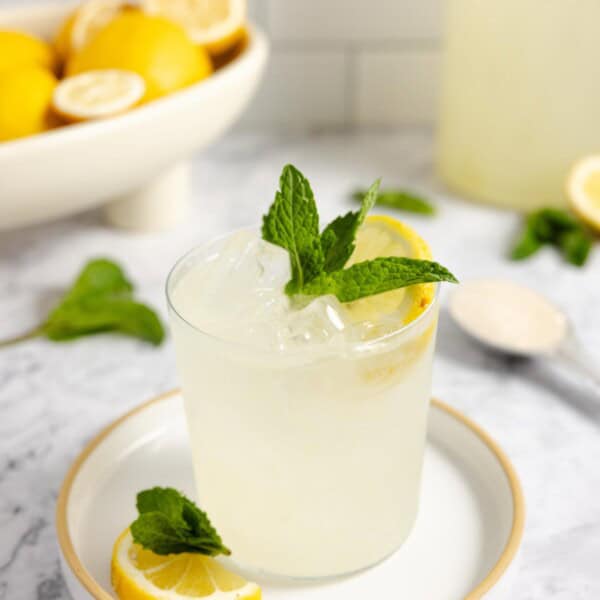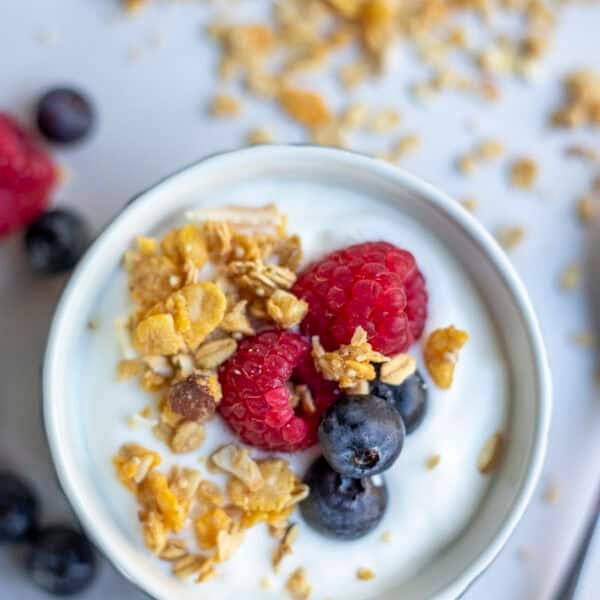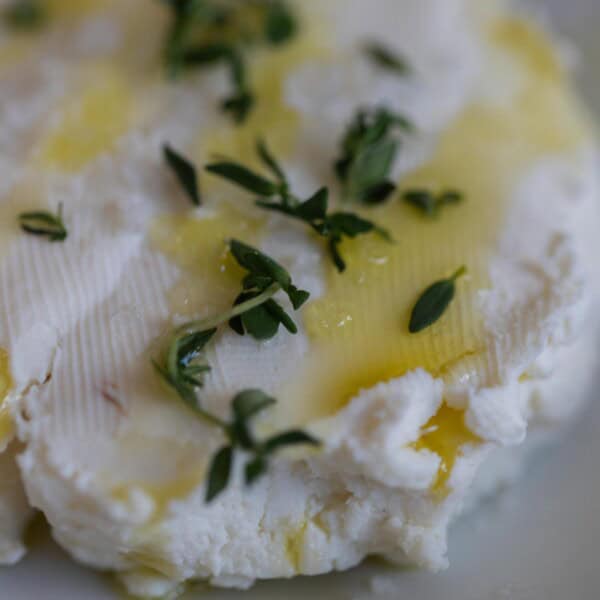Learn how to make this homemade kimchi recipe that is not only super delicious, but also packed with gut healthy probiotics.
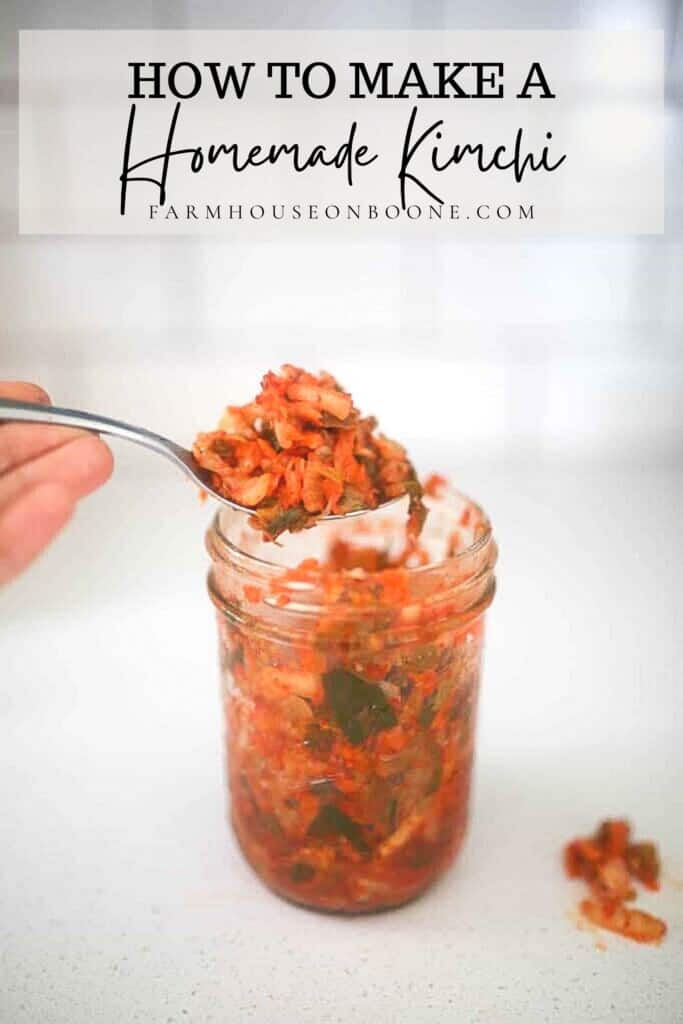
I don’t know if you guys know this about me or not, but I tend to be a bit of a foodie.
As I confessed in a recent post, I almost always make simple meals, but I love experimenting in the kitchen.
I truly appreciate local, quality ingredients, and will regularly go out of my way for such.
A twenty minute drive every week to pick up raw milk from a local dairy, a one hour trek north to an Amish community to buy raw honey by the gallon and homemade raw butter, plus frequent trips to the farmer’s market…
I wouldn’t have it any other way. Good food interests me.
My husband and I studied a book on Missouri mushrooms, so we could safely forage several varieties of native mushrooms.
Black trumpets, chanterelles, morels, cinnabars, blue milk mushrooms….which taste amazing on pizza, by the way.
Plentiful, delicious, and free for the taking! And as an added bonus, it takes a family hike to get them.
I was giddy the other day when going down a Pinterest rabbit hole led me to the idea of Moroccan preserved lemons. Why have I never heard of these before?!
Oh the culinary possibilities!
I first heard of fermented cabbage at a Korean-Mexican fusion burrito restaurant called Seoul Taco, that we have locally. AKA The Best Thing You Ever Put in Your Mouth EVER. I kid you not.
Ever since we first tried it, the obsession with making my own homemade kimchi – anything that could slightly resemble a burrito from Seoul Taco – began.
There definitely isn’t one single way to make your own kimchi.
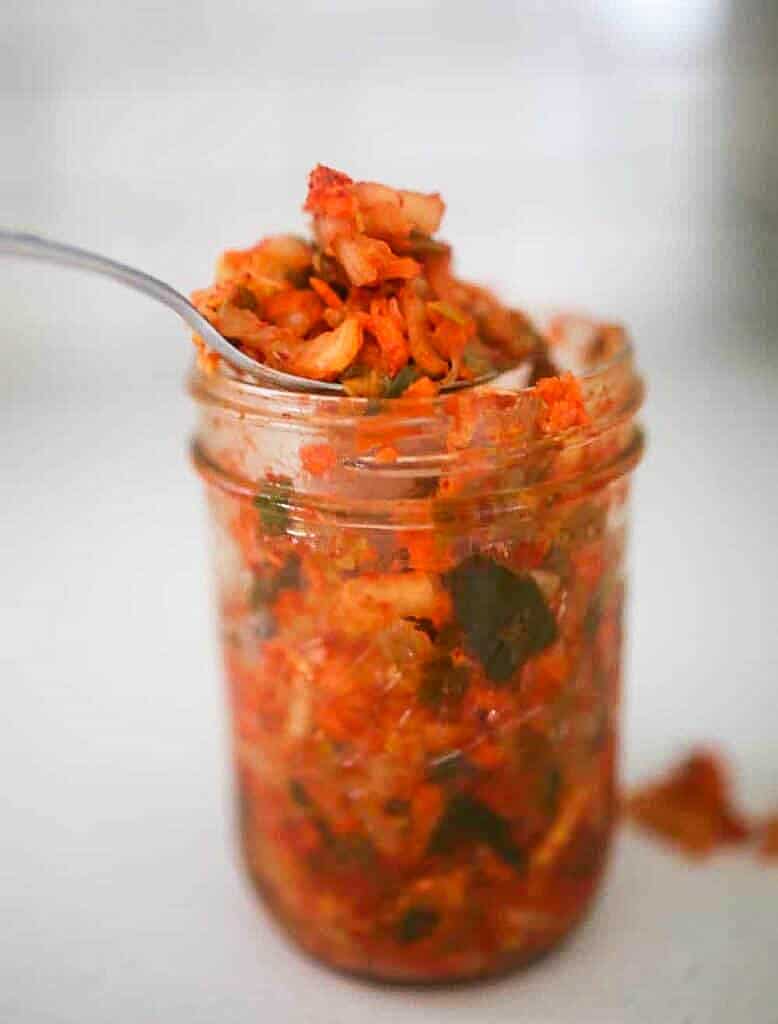
Fermented Veggies
I have been experimenting around with fermented vegetables for a while now, but I never ventured into the fermented Korean staple that is kimchi.
“Kimchi is a side dish made from salted and fermented vegetables, most commonly Napa cabbage and Korean radishes, with a wide variety of seasonings including chili powder, scallions, garlic, ginger and fish sauce.” source: Wikipedia
If you are new to the idea of fermenting vegetables, you can read my guide to fermenting vegetables HERE.
This post contains affiliate links, which means I make a small commission at no extra cost to you. See my full disclosure here.
For a quick run down of fermenting vegetables…
When salt is added to vegetables, bad bacteria is prevented from growing. Left in a salty, oxygen deprived, environment for a long period of time, at room temperature, only the good bacteria has an opportunity to grow, and thus, lactose-fermented vegetables are created.
For vegetables that have a high water content, enough brine is released from the vegetables when the salt is added.
Other vegetables like carrots, cucumbers and butternut squash, will need a brine created with salt and water.
So, basically, add vegetables to salty water or salty brine, deprive concoction of oxygen by submerging below said brine and allow to sit out.
What other fun ingredients you want to add/experiment with is up to you!
Back to the kimchi…
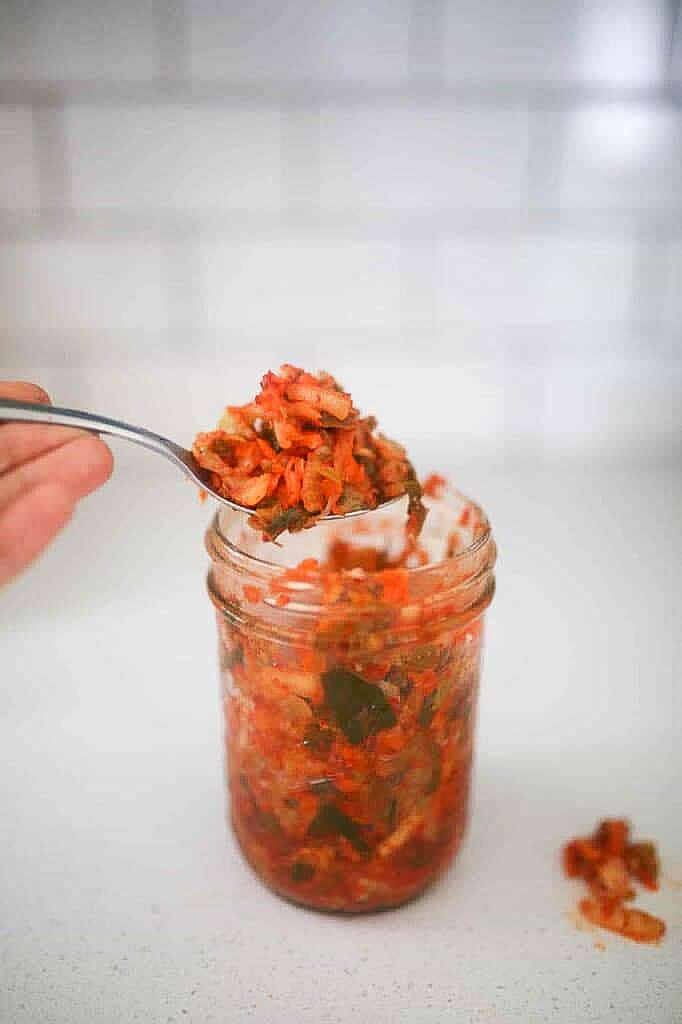
Tips For Making Homemade Kimchi
- When fermenting any vegetable, you want to make sure you use non-chlorinated water, as chlorine can kill the good bacteria.
- Choose unrefined sea salt, since other salts can cause the napa cabbage to wilt too much.
- You want to make sure that the kimchi is fully submerged in the brine. To do this, save a few full cabbage leaves to press down the cabbage below the brine, then place some sort of weight on top. This could be a fermentation weight, or even a rock (clean) in a sealed plastic bag.
- Fish sauce is a traditional Korean addition that adds a delicious Unami taste to the recipe. If you just cannot find this ingredient, you can skip. It won’t taste the same, but will continue to have wonderful probiotics.
How long should kimchi ferment?
This is dependent on the warmth of the fermentation area. If you are making it in summer, it may ferment enough in just 1-2 days, whereas if you make it in the winter, it may take 4-5 days. Bubbles will start to form, and you can taste it to determine if it has fermented long enough.
How do I know if my kimchi is bad?
If there is any mold, weird smell, or the appearance doesn’t look good, throw it out. Ferments usually last quite a long time. Sometimes, even a year. But if you are questioning it, then it may be better to dispose of.
Can I use “regular” green cabbage?
No, Napa cabbage is specific to kimchi and has a different texture than other cabbages. Using other types just wouldn’t be the same.
How do you know when kimchi is done fermenting?
Taste it. After about a day or two, you can start tasting the kimchi to see if it is done. Some like it more sour, so you may consider leaving it out longer before moving it to the fridge. If you don’t like it very sour, go ahead and refrigerate sooner.
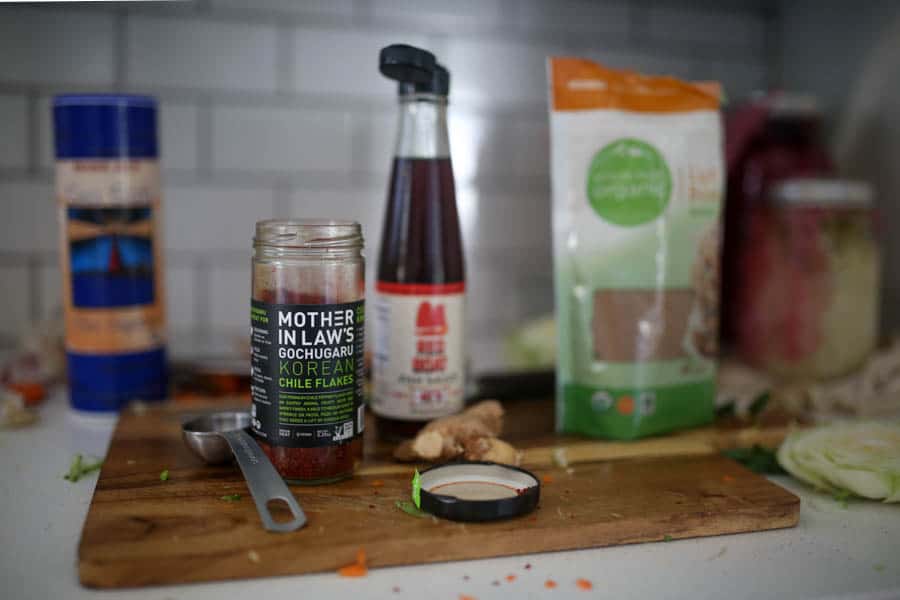
Homemade Kimchi Recipe Ingredients:
Napa cabbage, chopped
Grated ginger
Garlic
Green onions, chopped
Korean Chile flakes – this cannot be substituted with any other type of chili flake. Has to be Korean Chile flakes or the taste will be off.
Optional: 4 carrots, grated
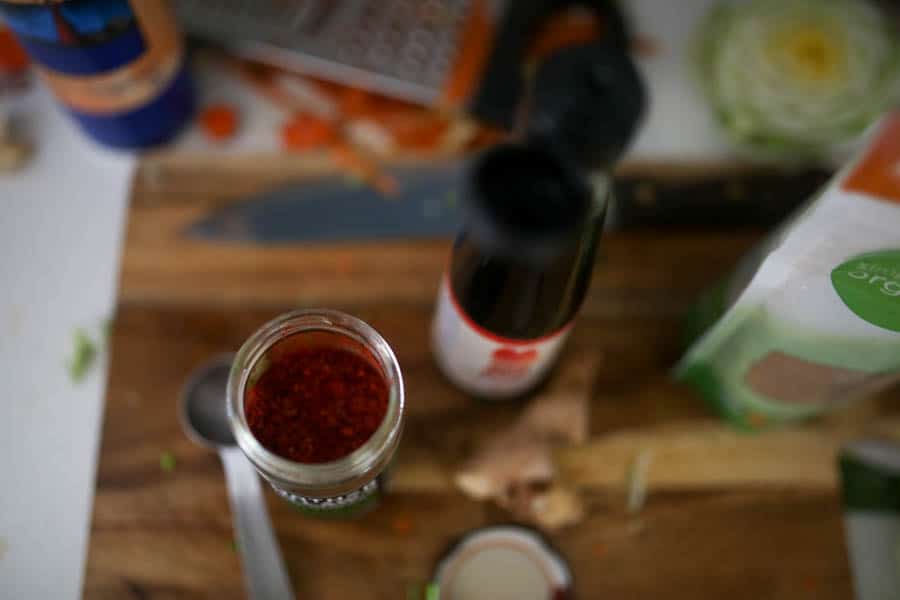
How To Make Your Own Homemade Kimchi:
Reserve a few outside cabbage leaves to use for pushing the kimchi below the brine. More on that later.
Chop and grate all the vegetables and add them, with the rest of the ingredients, to a large bowl.
Massage the ingredients together, so that the salt causes the cabbage to sweat and make a brine.
Let it all sit for a few minutes. You want everything to get nice and juicy.
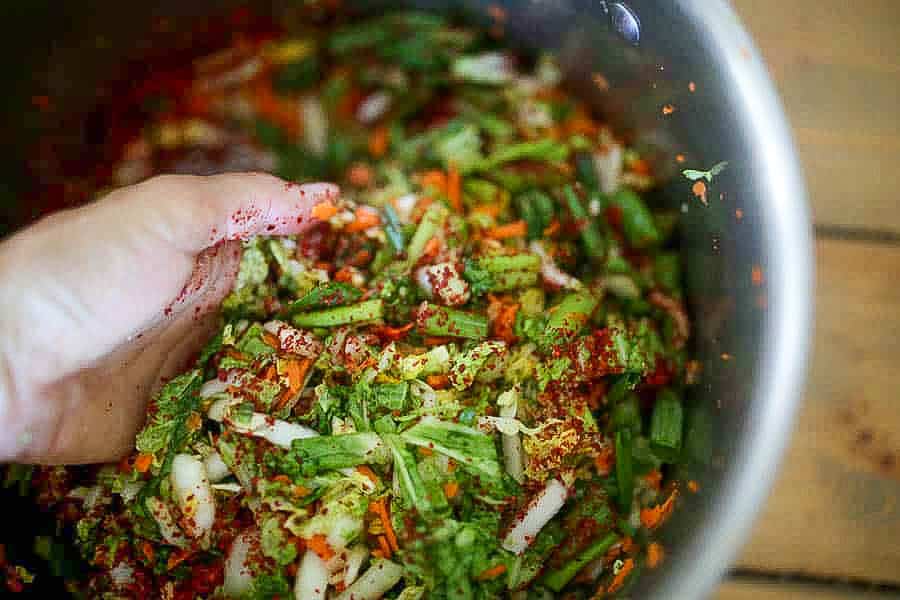
Pack the mixture tightly into mason jars. This particular recipe fits perfectly into three pint-sized jars.
Fold up a cabbage leaf, that you saved earlier, and use it to keep all the veggies down below the brine.
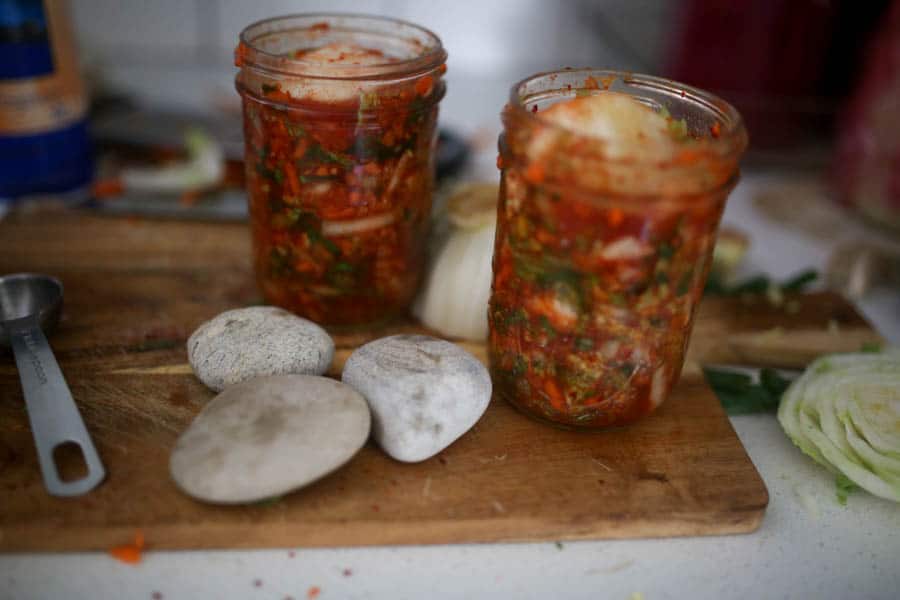
Add weights to the top of the mixtures and add a fermentation lid.
Sometimes, I like to top off my ferments with a little bit of water to make sure everything is good and submerged.
These mason top Pickle Pipes are my favorite lids for fermenting, but they were already in use with my other ferments.
So, instead, I just covered them with a little plastic wrap and a canning ring.
Since the cabbage leaf is separating the plastic from the kimchi you will be eating, don’t worry about the BPA and all that junk.
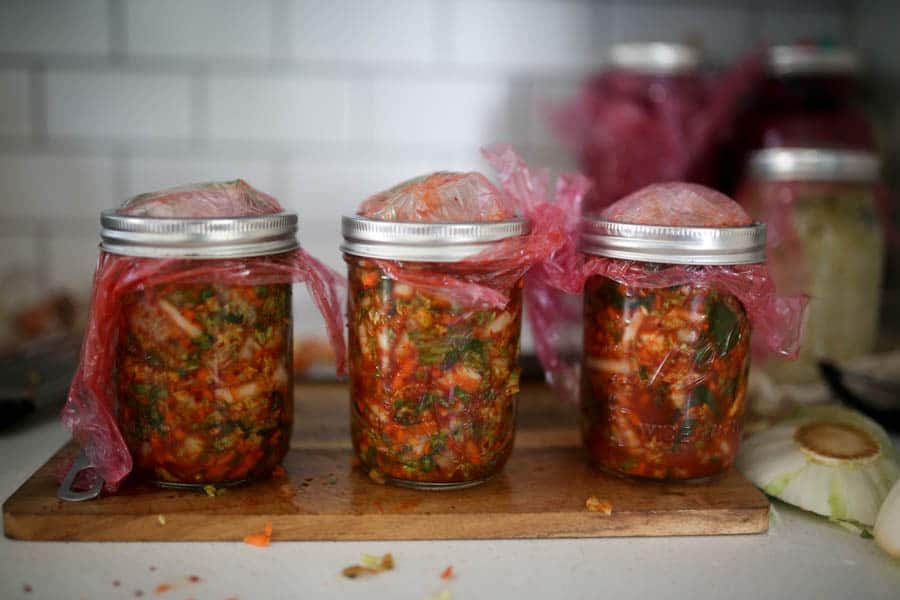
Let it sit out for about five days.
Take the rings, plastic wrap, weight and folded up cabbage leaf out. Replace with the regular mason jar lids and store in the refrigerator.
I would have taken a picture of all three jars, but we already finished one before I had a chance to write this tutorial.
Safe to say, we enjoyed it!
Serve homemade kimchi with sautéed beef, grilled chicken, or even fried eggs, for an extra zip.
Bonus points for making Bulgogi.
Yeah, I haven’t done that yet.
Enjoy!
Find more of my favorite fermented recipes:
- Homemade Fermented Ketchup
- Fermented Hot Sauce
- Fermented Balsamic Blueberry Vinaigrette
- How To Make Fermented Fruit
- Lacto-Fermented Garlic
- Fermented Carrots Recipe
- Lacto Fermented Salsa Recipe
- How To Make Fermented Jalapeños
- Homemade Fermented Pickles
If you make this recipe and love it, I would love if you gave it 5 stars! Tag me on Instagram @farmhouseonboone with your delicious creation.
Fermented Homemade Kimchi
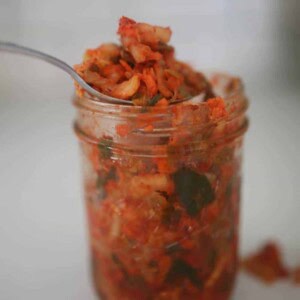
Ingredients
- 2 heads Napa cabbage, chopped
- 3 tablespoons sea salt
- 2 teaspoons brown sugar, organic
- 2 teaspoons ginger, grated
- 2 cloves garlic, minced
- 8 green onions, chopped
- 6 tablespoons Korean chile flakes
- 1 tablespoon fish sauce, optional
- 4 carrots, grated, optional
Instructions
- Reserve a few outside cabbage leaves to use for pushing the kimchi below the brine.
- Chop and grate all the vegetables and add them, with the rest of the ingredients, to a large bowl.
- Massage the ingredients together, so that the salt causes the cabbage to sweat and make a brine.
- Let it all sit for a few minutes. You want everything to get nice and juicy.
- Pack the mixture tightly into mason jars.
- Fold up a cabbage leaf, that you saved earlier, and use it to keep all the veggies down below the brine.
- Add weights to the top of the mixtures and add a fermentation lid.
- Let it sit out for up to five days. Check your fermenets everyday starting after day 2. Depending on the warmth of your home will determine how long it ferments for.
- Take the rings, plastic wrap, weight and folded up cabbage leaf out. Replace with the regular mason jar lids and store in the refrigerator.
- Enjoy.
Notes
- Use some kind of extra weight to keep it down, such as a few rocks in a ziplock bag or fermenting weights.
- Sometimes, I like to top off my ferments with a little bit of water to make sure everything is good and submerged.
- Yields 3 pint jars, approximately 4 servings each.
Nutrition
Nutrition information is automatically calculated, so should only be used as an approximation.
